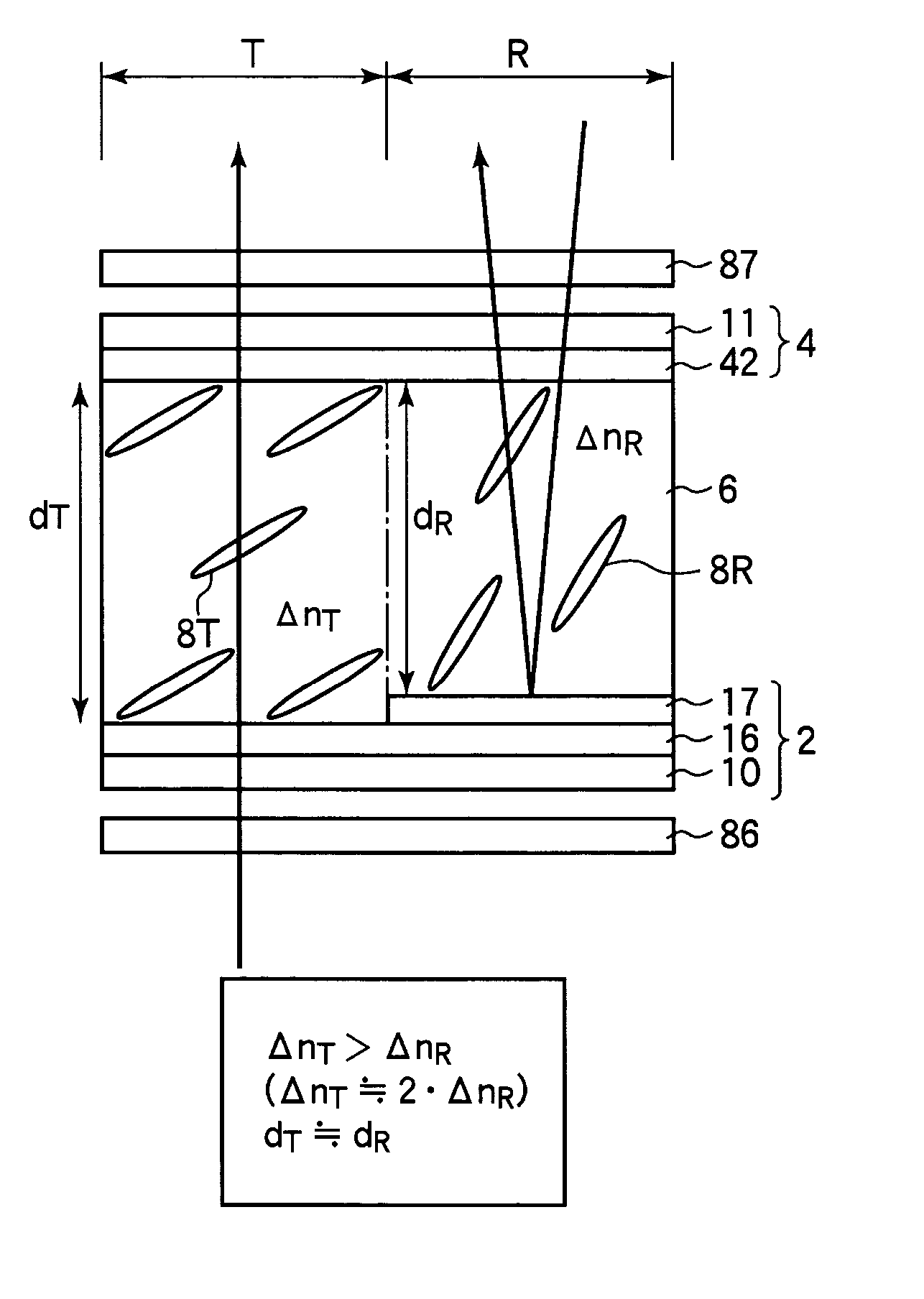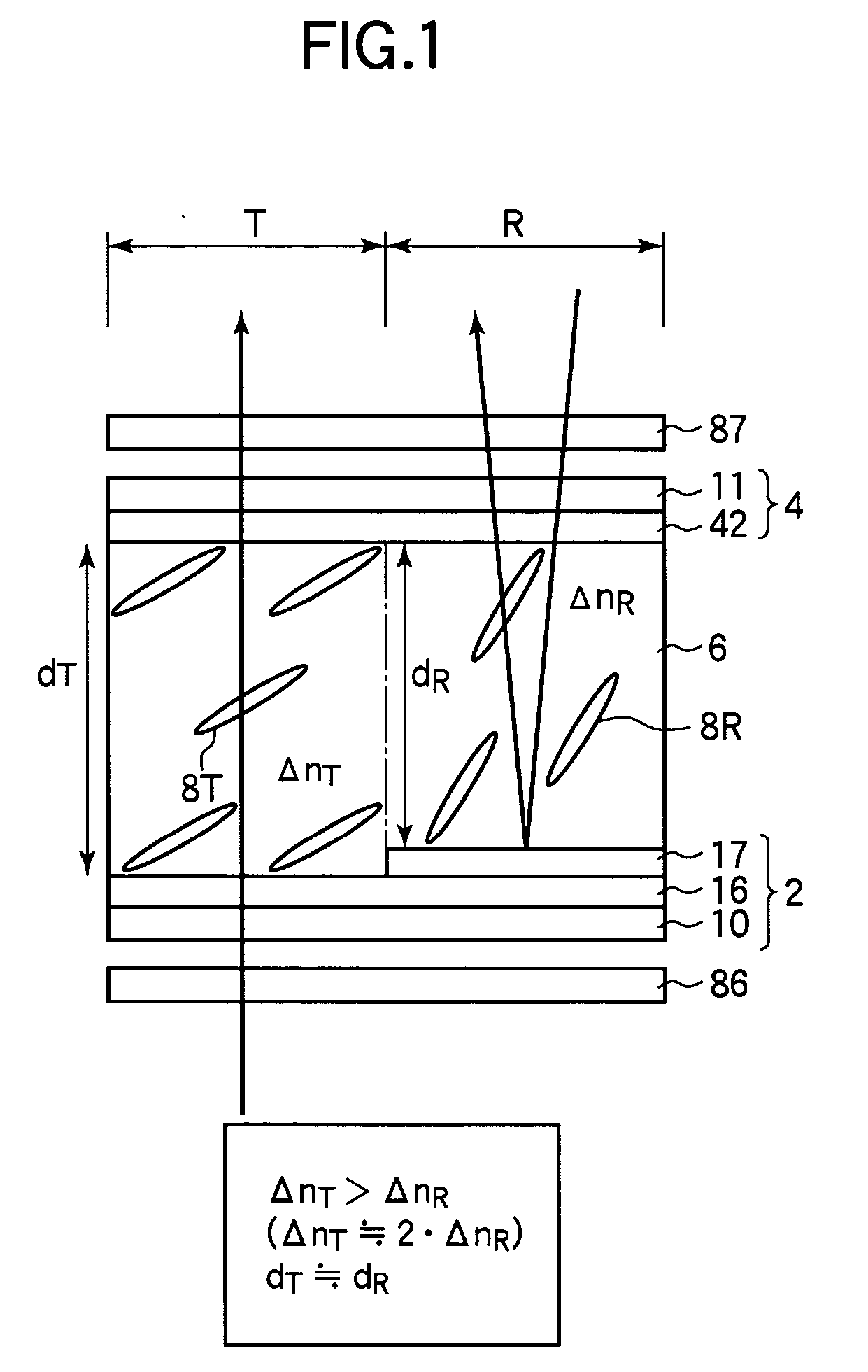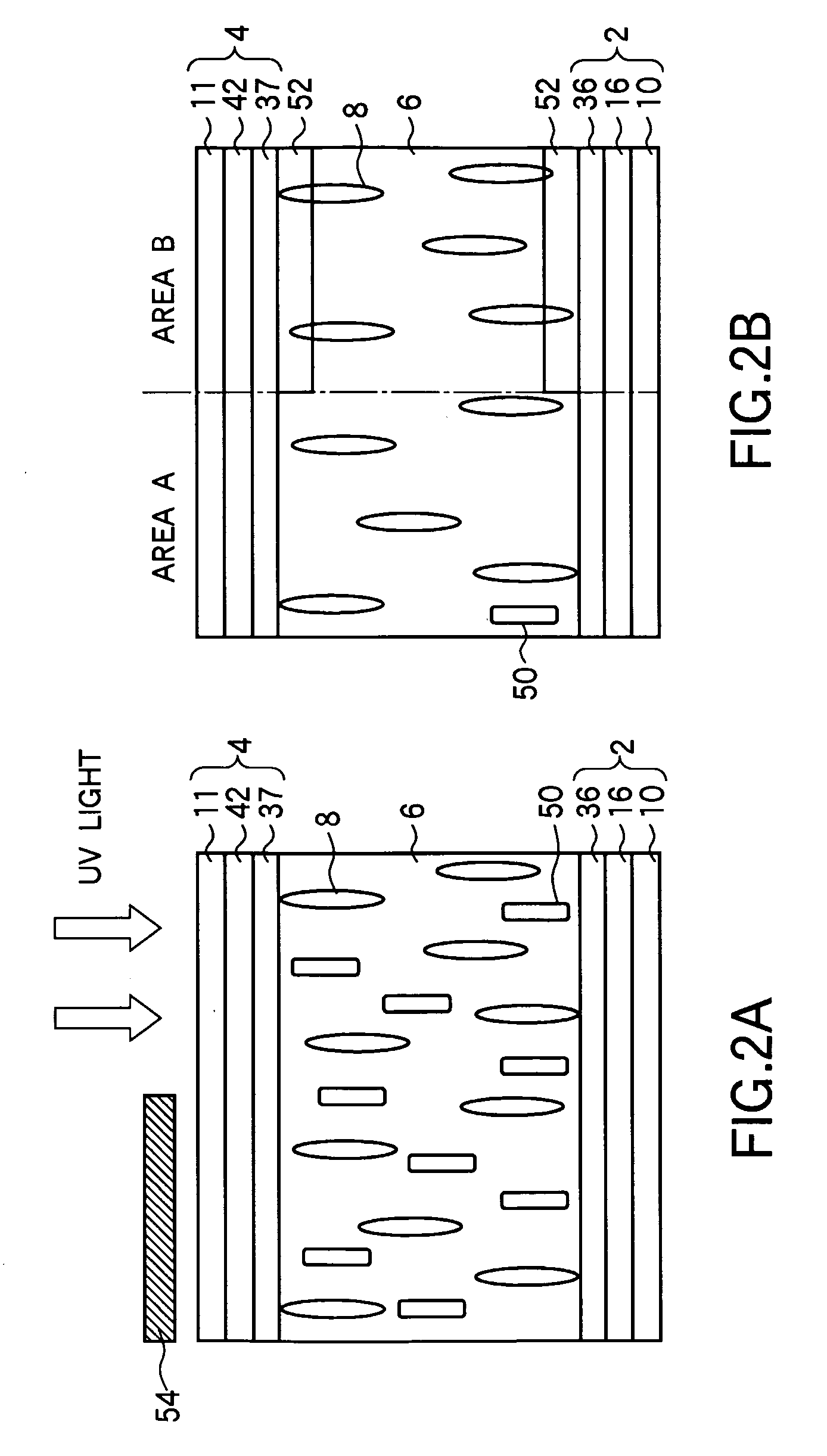Liquid crystal display and method of manufacturing the same
a technology of liquid crystal display and liquid crystal, which is applied in the field of liquid crystal display, can solve the problems of high power consumption, significant reduction in visibility, and low power consumption, and achieve the effect of high display characteristics
- Summary
- Abstract
- Description
- Claims
- Application Information
AI Technical Summary
Benefits of technology
Problems solved by technology
Method used
Image
Examples
embodiment 1-1
[0059] A liquid crystal display according to Embodiment 1-1 and a liquid crystal display as an example comparative to the same were fabricated. First, a liquid crystal display as a comparative example shown in FIG. 5 was fabricated as follows. As shown in FIG. 5, an aluminum (Al) film was formed using sputtering on an entire surface of a transparent electrode 16 and was patterned to form a reflective electrode 17 in the area shown on the right half of the figure. Next, alignment films 36 and 37 were formed, through coating, on entire surfaces of a TFT substrate 2 and an opposite substrate 4, respectively using a polyamic acid material manufactured by JSR Corp. The substrates 2 and 4 were rubbed in predetermined respective rubbing directions to achieve anti-parallel rubbing, and the substrates 2 and 4 were combined to fabricate an open cell. A negative nematic liquid crystal manufactured by Merck KGaA was injected in the open cell. The cell thickness was set at 4.2 μm.
[0060] Next, t...
embodiment 1-2
[0062] A liquid crystal display according to Embodiment 1-2 and a liquid crystal display as an example comparative to the same were fabricated. In the present embodiment and the comparative example, a color filter (CF) layer 40 was formed on a glass substrate 11 forming a part of an opposite substrate 4. Light passes through the CF layer 40 only once during display in the transmissive mode, whereas light passes through the CF layer 40 twice during display in the reflective mode. Therefore, the CF layer 40 is formed with a thickness d1 in a transmissive area T and formed with a thickness d2 that is about one-half of the thickness d1 in a reflective area R (see FIG. 7). The substrates 2 and 4 were rubbed on an anti-parallel rubbing basis in a manner similar to that in Embodiment 1-1, and the substrates 2 and 4 were combined to fabricate an open cell. A negative nematic liquid crystal manufactured by Merck KGaA was injected in the open cell to fabricate the liquid crystal display as a ...
embodiment 1-3
[0065]FIGS. 8A to 8C show a method of manufacturing a liquid crystal display according to Embodiment 1-3. In the present embodiment, as shown in FIG. 8A, linear protrusions 44 (banks) 44 were formed using a resist instead of applying and forming alignment films 36 and 37 in the transmissive area T. The reflective area R was not rubbed, although alignment films 36 and 37 were formed thereon through coating. The substrates 2 and 4 were combined with each other to leave a cell thickness of 4.2 μm in the transmissive area T, and an open cell was thus fabricated.
[0066] Next, a liquid crystal added with 0.8 wt % mixture of a photo-polymeric bifunctional monomer and a monofunctional monomer having an alkyl chain was injected in the open cell. Next, UV light incident upon the substrate surface substantially perpendicularly thereto was radiated from the side of the TFT substrate 2. The UV light had irradiation intensity of 2 mW / cm2 and irradiation energy of 9000 mJ / cm2. FIG. 8B shows the st...
PUM
 Login to View More
Login to View More Abstract
Description
Claims
Application Information
 Login to View More
Login to View More - R&D
- Intellectual Property
- Life Sciences
- Materials
- Tech Scout
- Unparalleled Data Quality
- Higher Quality Content
- 60% Fewer Hallucinations
Browse by: Latest US Patents, China's latest patents, Technical Efficacy Thesaurus, Application Domain, Technology Topic, Popular Technical Reports.
© 2025 PatSnap. All rights reserved.Legal|Privacy policy|Modern Slavery Act Transparency Statement|Sitemap|About US| Contact US: help@patsnap.com



